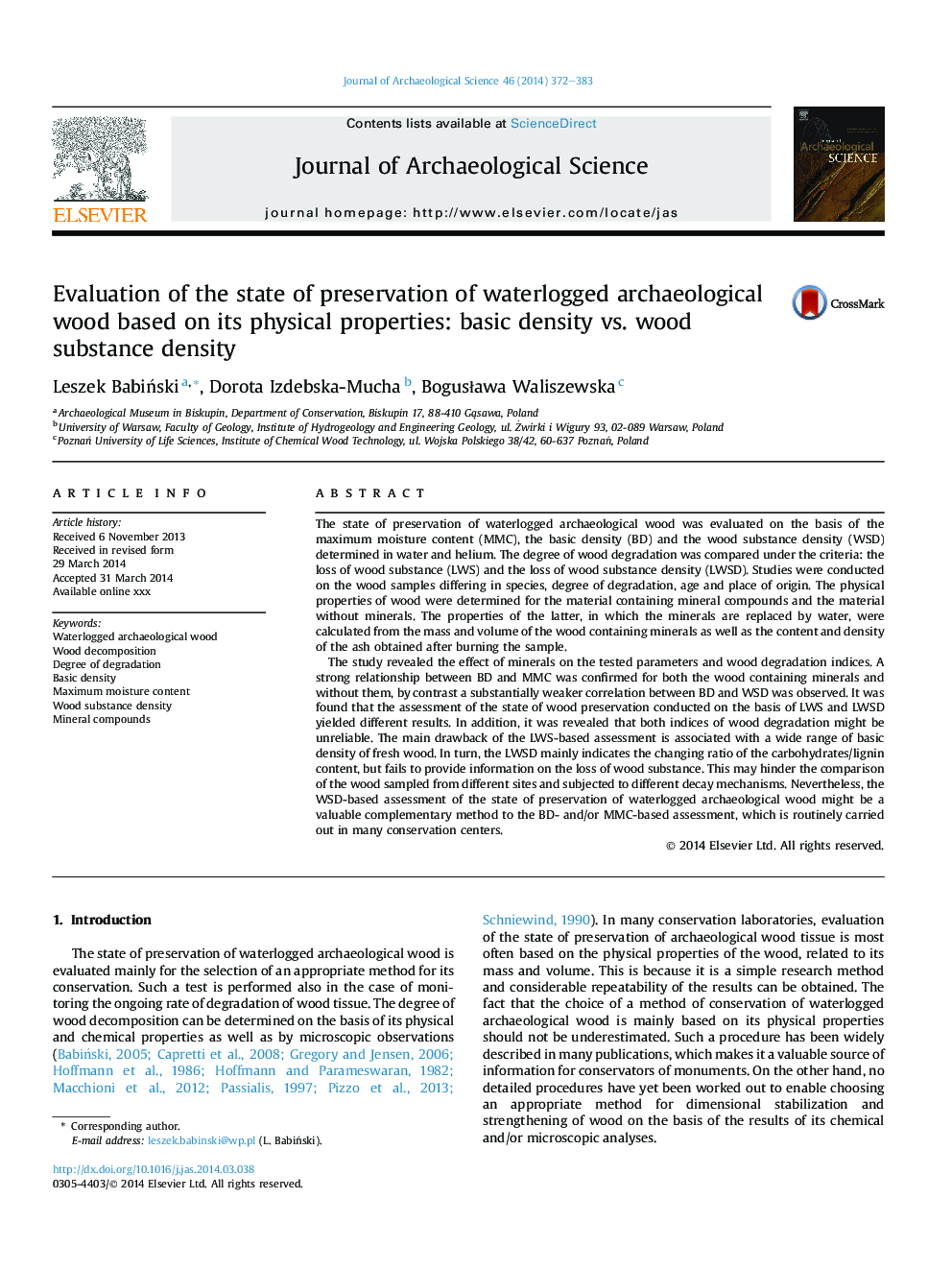| Article ID | Journal | Published Year | Pages | File Type |
|---|---|---|---|---|
| 7443564 | Journal of Archaeological Science | 2014 | 12 Pages |
Abstract
The study revealed the effect of minerals on the tested parameters and wood degradation indices. A strong relationship between BD and MMC was confirmed for both the wood containing minerals and without them, by contrast a substantially weaker correlation between BD and WSD was observed. It was found that the assessment of the state of wood preservation conducted on the basis of LWS and LWSD yielded different results. In addition, it was revealed that both indices of wood degradation might be unreliable. The main drawback of the LWS-based assessment is associated with a wide range of basic density of fresh wood. In turn, the LWSD mainly indicates the changing ratio of the carbohydrates/lignin content, but fails to provide information on the loss of wood substance. This may hinder the comparison of the wood sampled from different sites and subjected to different decay mechanisms. Nevertheless, the WSD-based assessment of the state of preservation of waterlogged archaeological wood might be a valuable complementary method to the BD- and/or MMC-based assessment, which is routinely carried out in many conservation centers.
Related Topics
Physical Sciences and Engineering
Materials Science
Materials Science (General)
Authors
Leszek BabiÅski, Dorota Izdebska-Mucha, BogusÅawa Waliszewska,
